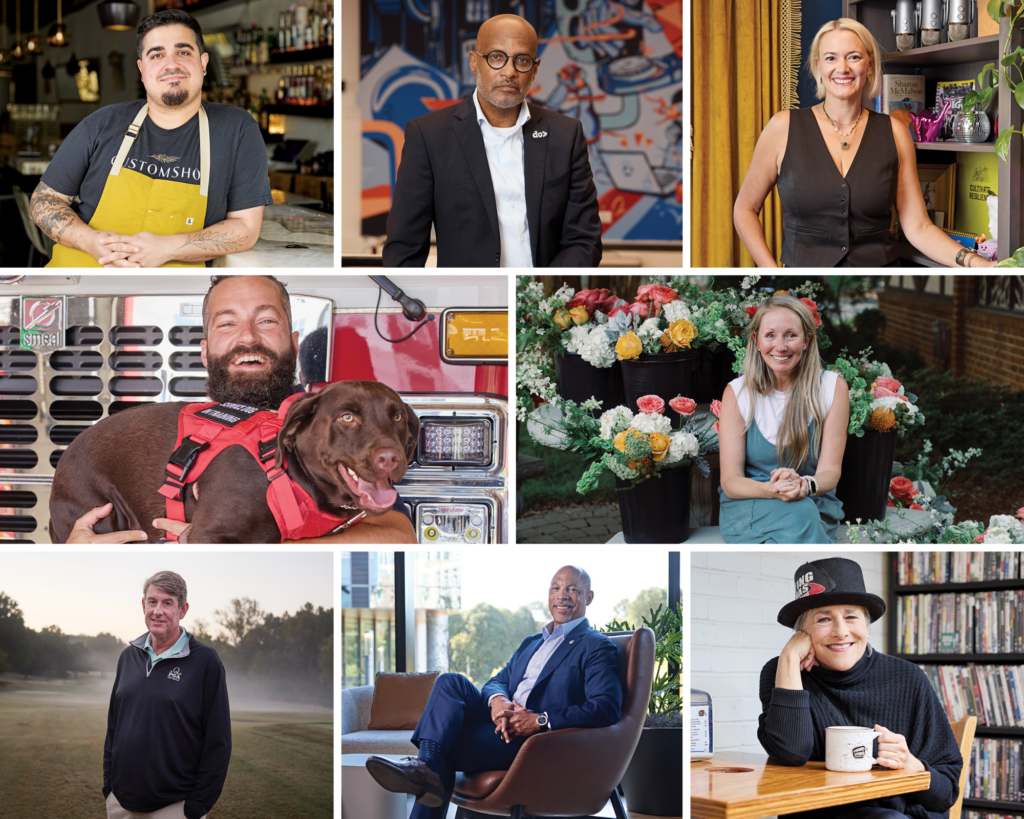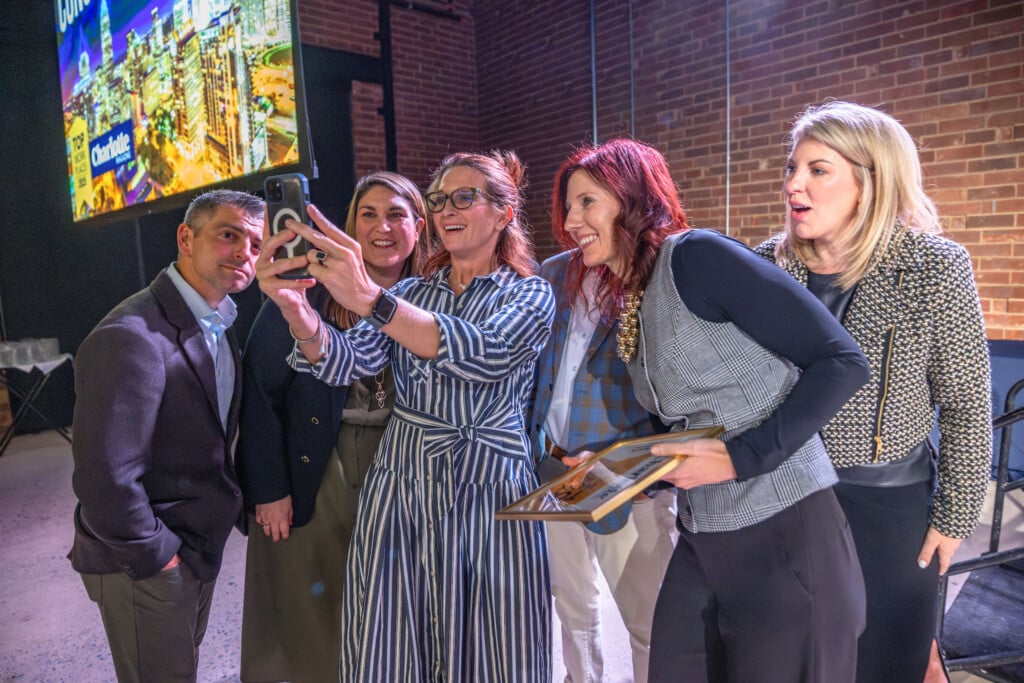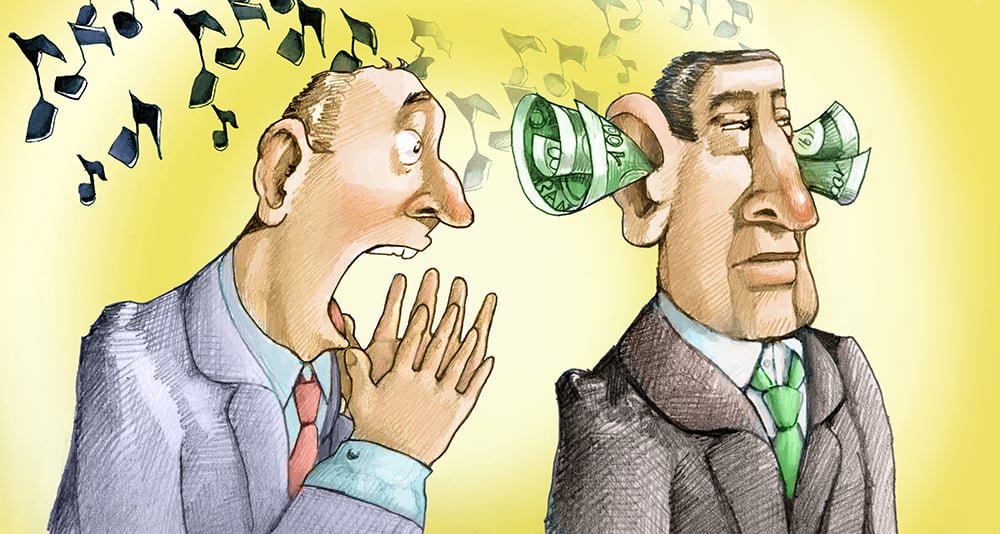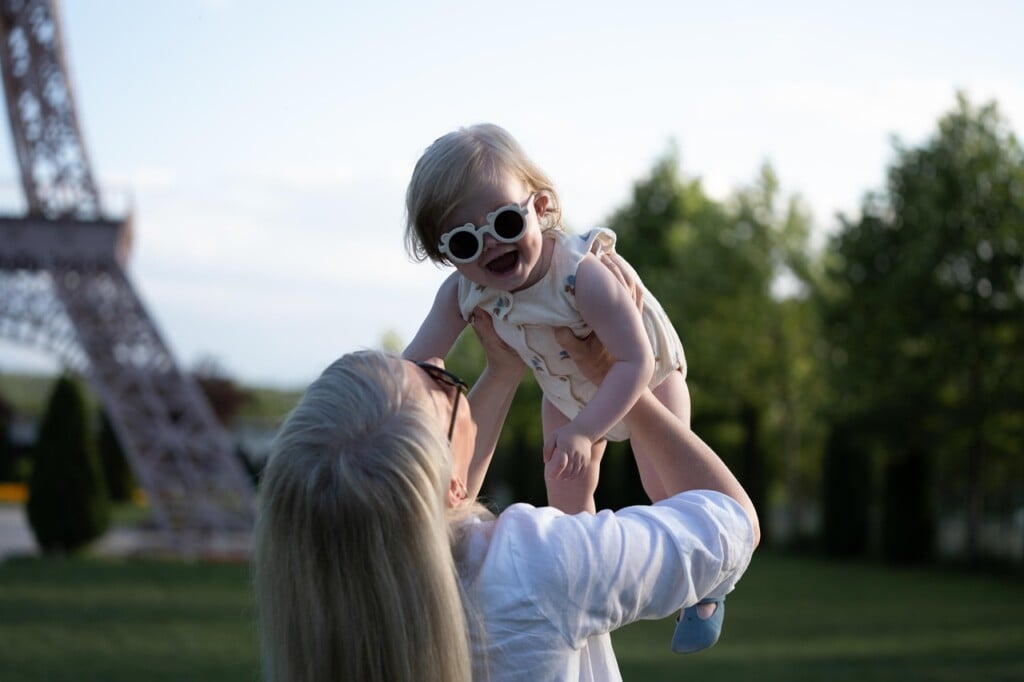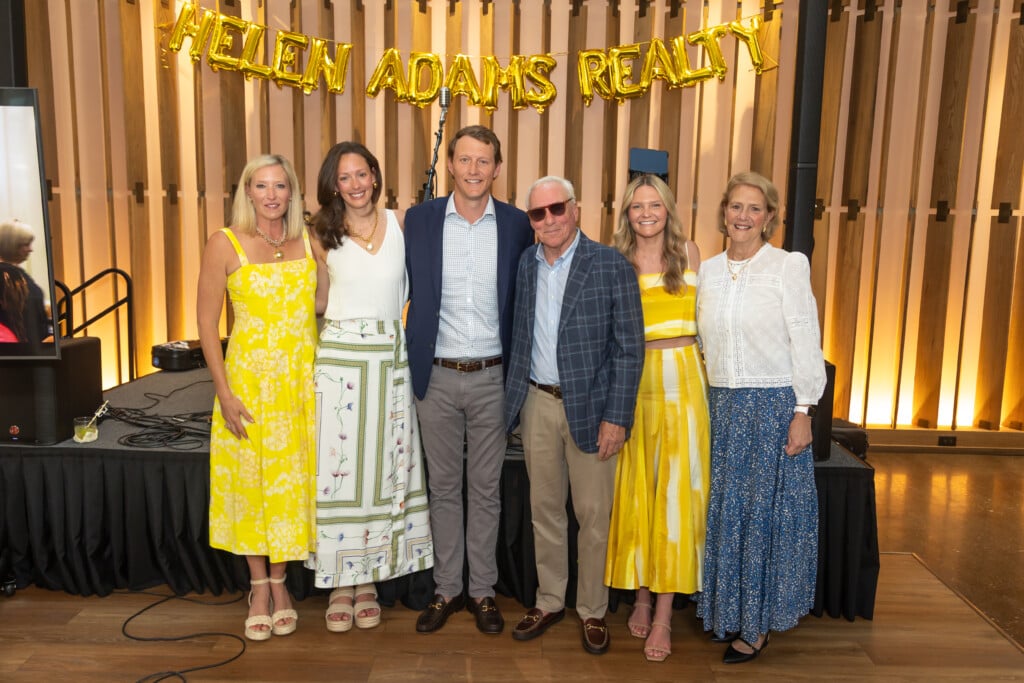Charlotte’s Former Mall Breaks New Ground For Eastland Park
This spring, the city begins work on a 4.5-acre urban park on the old Eastland Mall site, in one of Charlotte’s most diverse areas. The park, designed for the future, will also nod to a once-glorious past.
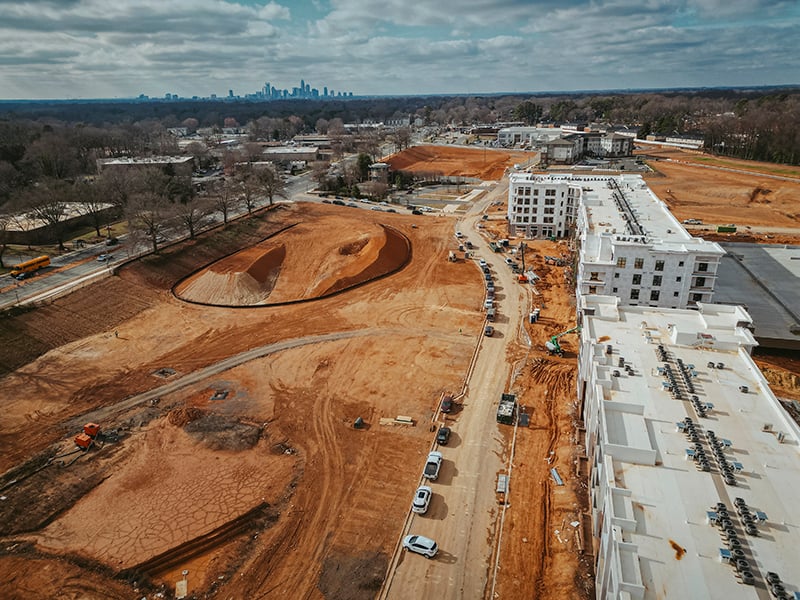
July 30, 1975. Midsummer in the South, and temperatures pushed 90. On this rainy Wednesday, Eastland Mall opened its doors. Somewhere outside, on Central Avenue, the Eagles’ “One of These Nights” spilled from car speakers. Inside, The Charlotte Observer reported, “It could have been a rock festival.” Cars crowded the 5,700-space parking lot. Eager shoppers carried giveaways: balloons, lollipops, snacks. For decades after a truly grand opening, Eastland Mall remained a civic destination, not just for high-end shopping but also for hanging out with friends and skating loop after loop at the mall’s centerpiece: an indoor ice rink.
Fifteen years after the mall closed, Eastland’s legacy still looms. Its famous sun logo adorns T-shirts, and the signs that once hung over the doors were designated as historic landmarks. “For families who grew up here back in the ’70s or ’80s, the closing of Eastland was like the closing of the casket, a funeral,” local historian Tom Hanchett told this magazine in 2021. “It was the end of the east side that they knew.”

Charlotteans thronged to Eastland Mall’s opening on July 30, 1975. Then-Mayor John Belk needed help to navigate the ice skating rink. Courtesy, Charlotte Observer Photograph Collection
Since then, Charlotte has wrung its collective hands over how to make best use of the coveted property. In the 12 years since the million-square-foot building was demolished, city leaders have sought to revive the site as a civic destination for 21st century Charlotte. This spring, the city will break ground on a 4.5-acre park as part of Eastland Yards, a larger mixed-use development project.
The groundbreaking will be a culmination of years of investment, research, and community feedback about how the site can serve the area’s diverse residents and fill the mall’s roles as a community hub and economic driver. Some neighbors have grumbled at what they perceive as city inaction; the site has stood vacant for more than a decade. But even as a vast empty lot, Eastland became a gathering place. A weekly flea market flourished there for years. An ad-hoc skate park nearby was no indoor ice rink, but it gave kids (and grown-ups) a place to practice tricks and hang out without fear of getting run off.
The city solicited public feedback on its plans for Eastland Park, and the renderings it released in December reflected residents’ desires for a place to walk, play pickleball, and splash around in the summers, which have only gotten hotter since ’75. Some other requested features? A dedicated dog area, a hammock grove, and, yes, a place to skate.

The park site in February (above)and a rendering of what it’s expected to look like when it opens in late 2026 (below).
CharlotteEAST, a nonprofit whose aim is to develop social and economic capital in east Charlotte, has trademarked Eastland’s sun logo and was active in the site development process. “(Mecklenburg County) Park and Rec did an absolutely phenomenal job of incorporating the elements the community wanted to see,” says its executive director, Greg Asciutto. An amphitheater and green space will provide a community gathering place, which Asciutto says this part of east Charlotte has lacked. Early in the process, some residents lamented that the park wouldn’t be bigger, but Asciutto says most are thrilled about what the plans accomplish for a small space with multilevel terrain. “I don’t know what more the community could really ask for in terms of getting the most bang for your acreage,” he says. “The opening can’t come soon enough.”
{Related read: Is Charlotte’s East Side Rising?}
Splashpad
Charlotte property developers Van Weatherspoon and Henry Faison began planning for Eastland Mall in 1969, amid a nationwide boom in shopping mall construction. Charlottetowne Mall, the city’s first indoor mall, had opened in 1959, and SouthPark would open in 1970. Sales at the shops on Trade and Tryon streets, the city’s traditional shopping district, soon dropped 25%. After SouthPark opened, some wondered whether Charlotte could support another mall, but Weatherspoon and Faison plowed ahead. The mall ultimately cost $25 million to build, at the hands of more than 60 construction firms.

The county has designed the new park’s splashpad as a tribute to the mall’s fountain (above) and its recognizable “rising sun” logo, (below) reflected on signs now in storage. Courtesy, Charlotte Observer Photograph Collection
Weatherspoon and Faison hired Alfred Kloke, of Katzman and Kloke Associates in New York, to design the mall’s futuristic interior. Modern globe chandeliers hung from an enormous skylight over the eye-catching ice rink. Modern escalators with clean lines connected the levels, where corridors emerged into tiered balconies over the rink. Kloke also designed Eastland’s iconic logo, the face of a sun, cheeks puffed as if with wind, surrounded by a corona of leaf-like rays. Little did Kloke, who died in 1997, know, his sun, wind, and leaf motifs would one day decorate a park.
Asciutto says they discussed installing the original 13-foot mall signs at the park. “But after some collective brainstorming, the decision was, ‘You know what? Why don’t we do something super unique?’” Now, the sun design will adorn a splashpad, which will anchor the park’s central plaza. “That logo means so much, not just to the east side and the Charlotte community but the greater Piedmont region,” he says. “When people see that, it evokes memories of great times at that site.”
Play Areas
When Eastland Mall opened, Charlotte’s population was 315,000. The city was growing steadily, by about 2% every year. In 1975, 41.5% of the population was white. Black residents made up the next biggest share, at 34.1%. The 1980 census recorded three “Eskimos” and fewer than 3,000 “persons of Spanish origin.”
Today, nearly 40% of Eastland-area residents are Latino. In the late 1980s, the city began to grow at a rate of more than 5% every year. Artists and immigrants who wanted affordable housing found a haven on Charlotte’s east side. The area lured families, too. Today, youth make up more than 30% of residents in the neighborhood around Eastland, compared to 23% countywide. The family-oriented character of the area helps explain why a playground was among residents’ top requests. Eastland Park will feature a three-tiered play area with swings, climbing structures, slides, spinning elements, and a hammock grove.
But will the kids who play there be able to afford to one day live nearby and bring their own children to the park? Some have worried whether the Eastland redevelopment will make the area a pricier place to live—and fundamentally change its character as an affordable, diverse neighborhood. Home prices, like everywhere else in the county, are on the rise. In the Eastland area, the average home price is $626,286. In the county, it’s $490,212. Residents repeatedly raised the issue of affordable housing during discussions, and it’s been a top priority during the redevelopment of the broader Eastland Yards site.
At Eastland Mall’s opening, the Rev. John L. Newton prayed that the mall would help to “overthrow the tyranny of economic want.” Locals are still praying.
Green Space and Multisport Courts
Last year, Charlotte ranked 87th out of 100 on the Trust for Public Land’s annual ParkScore report. The nonprofit pointed out in its report that park access facilitates social connection and local engagement. Mecklenburg County has 382 parks, but fewer than half of residents live within a 10-minute walk of one. The county devotes 7% of its land to parks and recreation, less than half the national median of 15%. The report noted that Charlotte-Mecklenburg invested $110 per person on parks. The national average was $124.
As Charlotte grows, so does concern about its green space and tree canopy. “The biggest place where we’re going to improve our score is by acquiring new land or new parks,” Bert Lynn, capital planning division director for Mecklenburg County Park and Recreation, told Axios last year. Since 2021, the county has dramatically increased funding to acquire and develop parkland. That year, the county earmarked $6 million and acquired 308 acres. Last year, it allocated $50 million to land acquisition and acquired 427 acres.
Eastland Park will make a dent in these efforts, contributing 5 acres of parkland to an urban, close-in neighborhood. It will make way for in-demand amenities like pickleball courts. Charlotte’s been touted as a potential outdoor sports mecca, but Eastland Park represents a more modest but possibly more meaningful attraction: a place nearby to play with friends.
Skateable Area
Eastland Mall’s indoor ice rink, Ice Capades Chalet, was one of its most memorable features. Charlotte Mayor John Belk wore skates for the ceremonial ribbon-cutting on the ice at the grand opening. “It didn’t seem like Christmas to me until I went to Eastland,” lifelong east side resident Patsy Kinsey told this magazine in 2021. The seven-term City Council member and 1959 Central High graduate—who briefly served as mayor in 2013—still has the ice skates she took to the mall. When the city recently asked residents to share their favorite memories from the mall or the east side more broadly, ice skating came up over and over.
After the city demolished Eastland Mall in 2013, the 29-acre vacant lot became a canvas for other kinds of skaters, who came to practice tricks. They eventually developed the Eastland DIY skatepark, a place that was free to access, easy to get to, and open 24/7.
“Are there other skateparks? Sure. But there’s no others that were built by the community for the community,” wrote Syn Harris in a 2022 essay for Queen City Nerve. “Skaters who are Black, Brown, gay and trans make up a good portion of the crowd that frequents the park. I’ve gone to many parks, and there are no others where I’ve seen as many people like me.”
From Orange Juliuses and ice skates to beers and skateboards, hanging out and skating have become quintessential Eastland activities. In 2022, almost 10,000 people signed a petition to save Eastland DIY as demolition loomed. The city awarded Eastland DIY a $15,000 placemaking grant to rebuild down the street, at Kilborne Park. The petition didn’t save the park on the mall site, but “skateable area” became a priority for Eastland Park.
Future Private Development
One corner of Eastland Park is marked for private development, and the park will sit adjacent to Eastland Yards, an 80-acre mixed-use development that encompasses the former mall site. The first phase of development included apartments, single-family homes, and affordable senior living units, some of which are already occupied. As part of a city program, the 16,000-square-foot ground floor of the apartment building will house commercial space for minority-owned and disadvantaged entrepreneurs.
The 29-acre former mall site has attracted more headlines—and anxiety from locals. It’s expected to be the neighborhood’s main draw, with talk of a sports complex and entertainment venue, but it’s been one of the most challenging parts of the project to flesh out. Tepper Sports and Entertainment had planned to build a Charlotte FC practice facility there but backed out in 2022. In December, City Council members approved an indoor and outdoor amateur sports facility.
“It has been an extremely long road to get here,” council member Marjorie Molina said after the approval. She represents District 5, which includes the site. “A lot of different ideas have gone in, gone out, but we’re finally to a point where, like I said, by 2027, 90% complete with an economic engine.”





